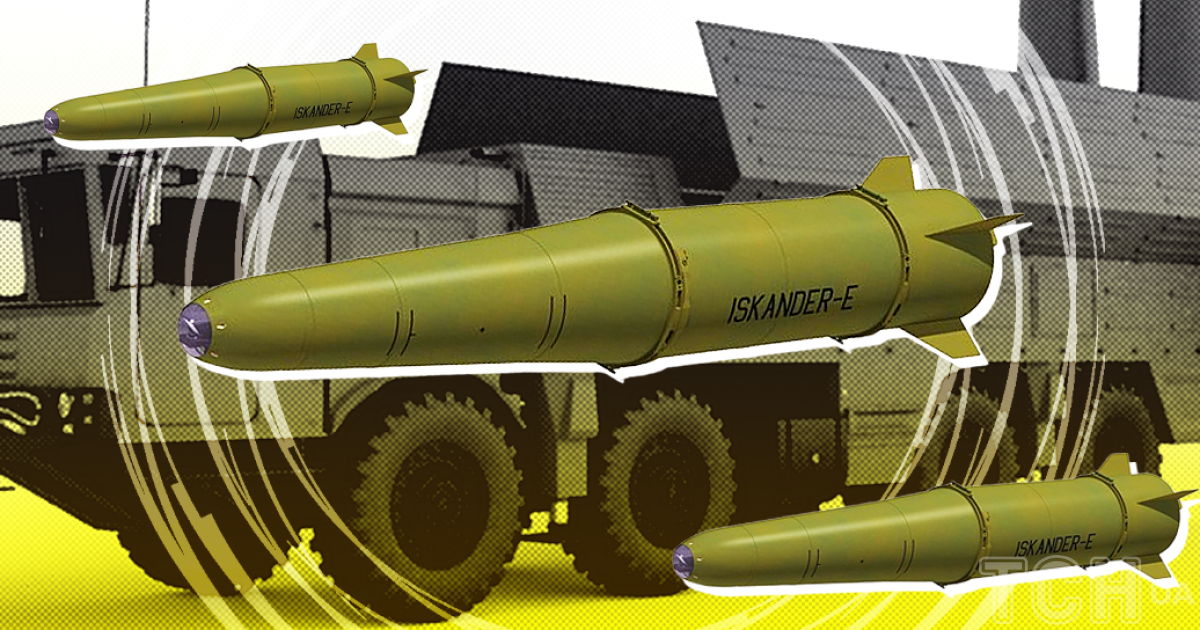On the night of June 1, the Russian army struck Kyiv. The occupiers fired ten Iskander missiles from the northern direction, the Bryansk region of the Russian Federation. Air defense forces shot down all enemy targets, but casualties could not be avoided.
The TSN.ua website asked military expert Oleh Zhdanov what these missiles are and how many more there may be in Russia.
500 km overcomes in 7 minutes
Military expert Oleh Zhdanov explained that the Iskander tactical missile system replaced the old Scud (R-17) complex in 2018.
"It has two missiles – cruise and ballistic. So, his missile is ballistic, it has a launch range of up to 500 kilometers and a warhead of up to 500 kilograms. He has somewhere more than 400 kg of TNT in this rocket. The danger of this missile is that it is a ballistic missile and it overcomes a distance of 500 kilometers in 7-8 minutes," Zhdanov explained to TSN.ua.
Russian operational-tactical complex Iskander / Photo: InformNapalm
Whipping is extremely difficult
It is extremely difficult to shoot down such a missile, the military expert said. The shorter the range, the harder it is to shoot down ballistic targets, he explained. According to Zhdanov, for this purpose, the Patriot anti-aircraft missile system was upgraded to ballistics in the United States.
"The version of the PAC-3 complex, which is in Ukraine today, it is already designed to combat ballistic targets. And so they have developed a separate anti-missile system THAAD, which shoots down ballistic missiles. There are no other complexes. Before the advent of the Patriot, we had nothing to shoot down the Iskander missile. It could have been an accident," Zhdanov told TSN.ua.
Highly accurate and causes continuous destruction
He noted that the Iskander is a very high-precision missile. It can deviate several meters from the calculated aiming point, Zhdanov said.
"Usually, any missile is created for nuclear warheads. Because a high-explosive fragmentation charge for a rocket is not entirely profitable. And the Iskander, among other things, was created for a nuclear projectile. But in conventional wars, when only conventional weapons are used, they are used in high-explosive fragmentation version. For this purpose, large objects, industrial buildings are chosen, in the case of the Russian Federation these are residential buildings, medical institutions," he told TSN.ua.
Zhdanov added that the Iskander causes an explosion of high power and causes large, continuous destruction within a radius of 500 meters.
Russia's Iskander tactical system / Photo: Getty Images
How many missiles are still in Russia
According to Zhdanov, according to the latest data as of March 30, 2023, published by Forbes magazine, less than 144 Iskander-M missiles remained in Russia.
"I admit that taking into account the fact that they have already fired at us, which is about 20 missiles only in the last week, well, taking into account the possibilities for the production of these missiles, this number remained. 140-150 missiles, maybe they still have," the military expert said.
Iskander night strike on Kyiv: what is known
Recall that on the night of June 1 at about 02:45, Russia continued a series of attacks on Kyiv. Air defense forces shot down ten missiles: seven Iskander-M ballistic missiles and three Iskander-K cruise missiles.
Debris from missiles caused damage in the city. The destruction was recorded in Darnytskyi, Dniprovskyi and Desnianskyi districts. In the latter, debris fell on a children's clinic, two schools, a kindergarten and a police station were damaged.
As a result of enemy rocket fire, three people were killed. Among them is a child born in 2012.
Two women and a child wanted to get into a bomb shelter at a local clinic, which was locked during the air raid alarm. It was at this time that the wreckage of a Russian missile fell near the medical facility, which killed people.
Read also
- Why from alarm to missile explosions - a matter of minutes: Ignat explained the level of threat
- Shelter or bathroom: expert told how to survive during the air raid alarm
- "The three poor ones were running around the shelter": eyewitnesses told about the moment of the missile strike on Kyiv
